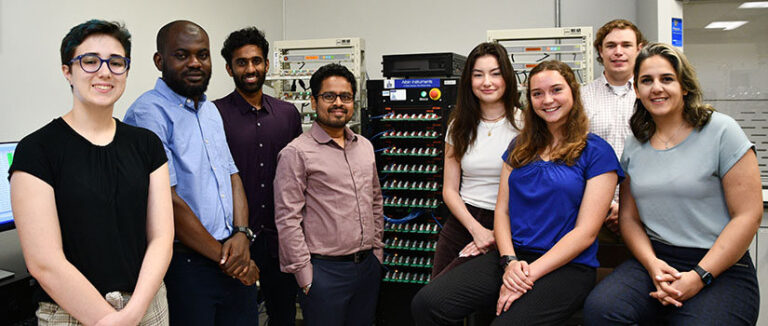Researchers at the University of South Carolina successfully converted their highly durable lithium-sulfur battery technology from coin to pocket cells and reported competent energy densities.
Lithium-sulfur batteries are a promising candidate for high-performance energy storage applications due to their low cost and high theoretical energy density of over 500 Wh/kg in combination with lithium metal anodes.
However, developing a highly durable sulfur cathode has been challenging due to the polysulfide shuttles and volume variation of sulfur that lead to chemical and mechanical degradation of the cathode during cycling.
Researchers at the University of South Carolina have taken a huge step forward in tackling this problem by developing a simple electrode processing method for the production of highly durable sulfur cathodes. These electrodes feature a self-structured binder trap for sulfur particles using only commercially available sulfur, carbon black and binder, without additional components.
The researchers controlled the dissolution of the binder during the slurry preparation step to form a porous binder/carbon shell structure around the sulfur particles that can trap the soluble polysulfides and slow down the shuttling mechanism.
The sulfur cathodes achieved through this method provide excellent capacity retention of 74% over 1000 cycles, thanks to a significant reduction in lithium-polysulfide shuttles and active material loss. Electrodes with high surface loading also showed excellent cycleability and high capacitance.
The researchers reported these results last year after completing the first phase of the project, in which they used coin cells. Now they are turning to practical battery forms to determine whether commercialization is possible.
The team’s current work focuses on pouch cells, which theoretically have the highest energy density, because this type has the least waste weight. “Pouch cells tend to have a lighter and thinner battery casing than the other forms, leaving most of the battery’s volume and weight for the energy-providing components,” says Golareh Jalilvand, assistant professor of chemical engineering.
While the challenges of batteries increase as they become larger, the USC researchers have reported a rapid and successful transition from coin to pouch cells. “We have achieved excellent lithium-sulfur cells with competent energy density,” says Jalilvand. “I look forward to seeing the longevity and durability of our pouch cells as that is the final tick for us and our industrial partner. With that, it may be time to say that we have a lithium-sulfur battery that is ready for commercialization.”
Given the long charge-discharge time, the researchers consider lithium-sulfur batteries to be most suitable for applications where fast charging is not required. This includes heavy trucks, buses and other transportation equipment that require a long unloading time, known as miles, and may be kept at loading stations overnight. The technology also shows great potential for stationary applications, such as grid-level energy storage and space applications.
This content is copyrighted and may not be reused. If you would like to collaborate with us and reuse some of our content, please contact: editors@pv-magazine.com.


